"[In China] Five mythic tigers together constitutes a symbol which is invested with the same meaning as the tetramorphs in Christian tradition, in so far as they are the defenders of the spacial order against the forces of chaos. The Red Tiger reigns in the south, his season being summer and his Element fire; the Black Tiger reigns in the north-winter is his season, and his Element water; the Blue Tiger reigns in the East, in the spring and amidst vegetation; the White Tiger predominates in the west, in autumn and among the metals; and, finally, the Yellow Tiger (solar in colour) inhabits the earth and reigns supreme over all the other tigers. This Yellow Tiger is located in the 'Centre', as the Emperor was situated in the heart of China and as China lies at the centre of the world. This quaternary division plus the centre as the fifth Element is, as Jung has shown, of archetypal significance in the symbolism of situation."
If you lived through the '80s, especially if you grew up in the '80s like I did, then this description naturally brings this to mind:
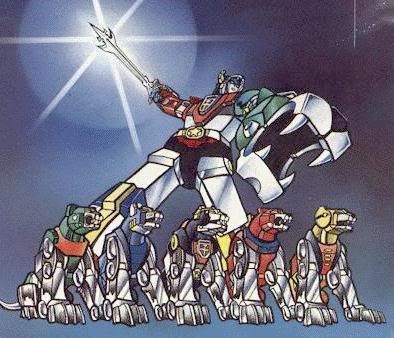
Not exactly the pattern Cirlot describes, but pretty damn close. This is Voltron, of course, specifically Voltron III or Voltron of the Far Universe, the Lion Voltron based on and built out of the Japanese anime "Hyakujuu-ou Golion" (Hundred Beast King GoLion/FiveLion). Undoubtedly this makes Voltron the Quintessential giant mecha. Here's footage from "Voltron" of the four elemental Lions activating, note the locales they emerge from:
The Fifth Lion, in this case the Black Lion, representing the Center, emerges at the castle from within a statue of a Winged Lion. A Winged Lion is a direct reference to the occidental Tetramorph, specifically representing the constellation Leo/Fire. The pilot of the Black Lion likewise wears a Red uniform, which further would associate with Fire. I'd like to think in this we can see how complex these symbol systems can be in their presentation, with the information perhaps distorted in synchronistic translation, or even purposefully rearranged. I believe it demonstrates how, as is the case with Lyra's Alethiometer, the information is multi-layered. Sara Lee symbolism.
We in fact see this elemental patterning to such a degree in Japanese anime, manga, video games, etc., that it is clearly traditional iconography. There are probably hundreds if not thousands of examples. As the title of this article implies, we clearly see it in play in many of the Japanese Super Sentai series (like "Golion", Toei/Bandai productions), which have been reworked and translated for American children as "The Mighty Morphin Power Rangers", and its antecedents.
This is not an unusual practice whatsoever, a cut and paste of anime for a Western audience. As a young child I was totally enthralled by "Battle of the Planets", about the super hero team "G-Force". I even had the lunch box. But of course I was too young to realize that this was a bastardized presentation of Kagaku ninja tai Gatchaman (Science Ninja Team Gatchaman). How could I not love this cartoon? The bad guy was a bat-like hermaphrodite, and the good guys were super science ninjas who dressed like Birds, for goodness sake, and they flew around in a space ship called "Phoenix" that burst into flame (on purpose) once per episode (as the ultimate resource of the team). Gatchaman is cited as the originator of the Five member team motif utilized in the Sentai works that followed.
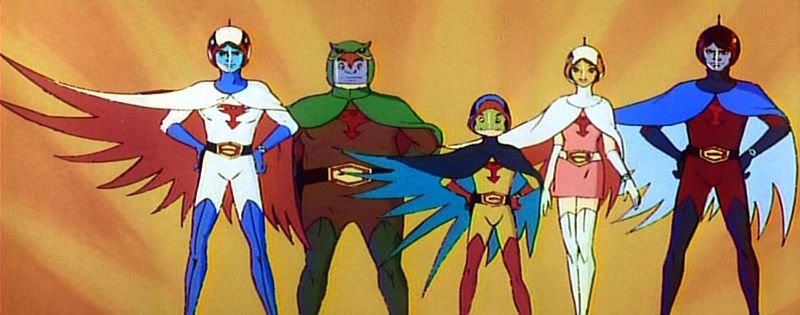
The specific bird types their costumes represent are (l.-r.) Eagle, Owl, Swallow, Swan and Condor. I can't see a way to clearly relate these figures to Four or Five Elements, and I believe this is again due to complex symbol layering, but if I had to guess based on color schemes and predominant characteristics I would say Fire, Earth, Air, Ether and Water. While the Swan is certainly indicative of the element of Water, the status of the character as the sole female member (called "Princess" in "Battle of the Planets") differentiates her, and suggests the divinity of a Sovereignty figure (note the many, many Princesses in Japanese entertainment, Voltron being a ready example).
Heavily involved here is the interaction, the mutual influencing, of Eastern and Western artistic expression, a huge topic that I'm only going to nod to here. The Sentai genre inspiring Gatchaman is clearly inspired by American comic books, specifically animal based characters. Likewise I find some pretty clear examples of Japanese works that seem to have inspired Jack Kirby, for example. There is a great deal of Osamu Tezuka's atomic powered Pinocchio Astro Boy/Mighty Atom evident in Machine Man. And in terms of design, it's hard to imagine Kirby came up with the original look of Iron Man without any awareness of Mitsuteru Yokoyama's Gigantor, who is also known as Iron Man #28.
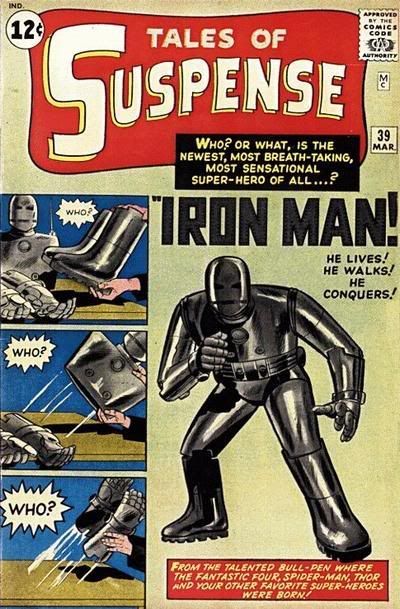
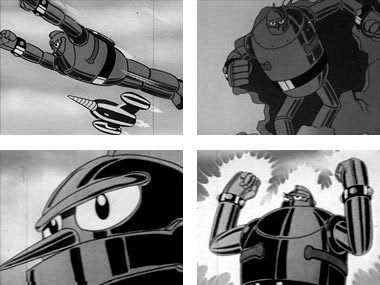
And if you're familiar with the Kirby designed Sentinels from the X-Men, you may agree with me that they bear a striking similarity to Japanese-style giant robots.
The Elemental pattern involving four or five is of course present in Western cartoons and comic books as well. I won't even get into Bill Willingham's "Elementals", too easy. I've brought this topic up before in Mercury Retrograde, making mention of the characters from the super hero films "The Incredibles" and "Zoom" (noting in both cases that Fire is specifically displaced) as extrapolations from the clearly elemental Fantastic Four created by Jack Kirby and Stan Lee.
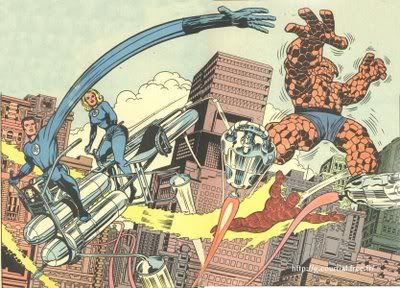
Art by Jack Kirby
The Thing is Earth, the Human Torch is Fire, the Invisible Girl is Air and Mister Fantastic is Water. One could read the Cosmic Energy that generates their abilities as the Fifth Element, and the position eventually is characterized by the omni-powerful Franklin Richards, the son of Reed and Sue, the product of their Chemical Wedding.
More specific attention to the Tetramorph pattern was noted in The Great Marvel Mysteries Part Two when I discussed Jean Grey/Phoenix/Marvel Girl, who is Ether, with the solar powered Cyclops representing Fire, the Iceman Water, the flying Angel Air and the Beast Earth.
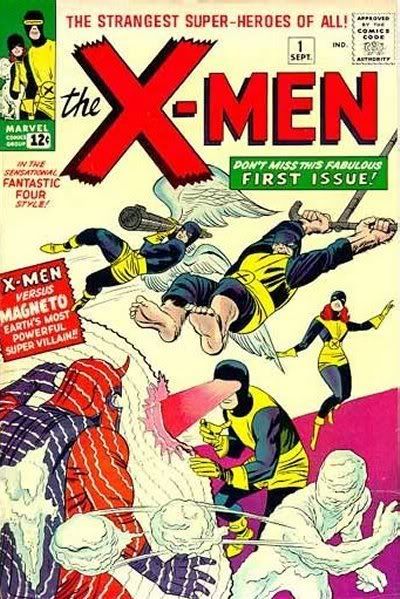
Art by Jack Kirby

Art by Jack Kirby
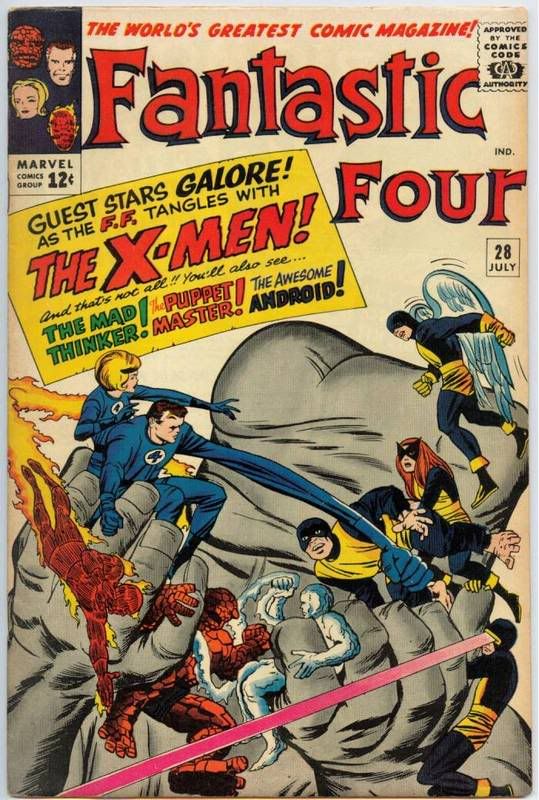
Art by Jack Kirby
Naturally the same elemental pattern was applied by Lee and Kirby to the FF's supposed opposite numbers, The Frightful Four. The Sandman is of course Earth, the anti-gravity expert Wizard is Air, the super-glue using Paste-Pot Pete is Water and the prehensile haired Medusa is Fire.

Art by Jack Kirby
How great that the issue introducing the elemental Frightful Four included a guest appearance by the Quintessential X-Men.
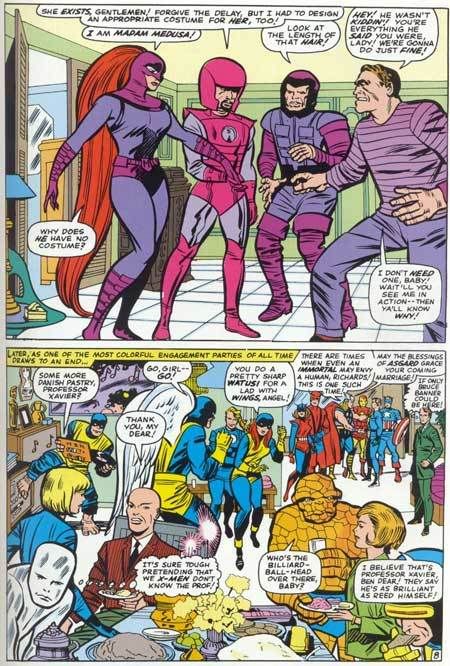
Art by Jack Kirby
And at an engagement party for the pending Chemical Wedding no less. The Avengers, however, are not Elemental. They're far more planetary, or the days of the week, if you include Captain America along with the original lineup, and count the Hulk twice. Because the Apollonian/Dionysian Hulk stands for Sunday and Monday, Mars signifying Iron Man is Tuesday, Hermes resonator Captain America is Wednesday, Thor is of course Thursday, the flirty, sole female, the Wasp (Bee) is Friday, and the Titanic Giant Man is Saturday. I'm not saying this particular pattern is purposeful, I'm just saying it is.
Kirby's Madame Medusa is far more then just a member of a team of second-string villains though. She's something very special, a variation of human even more specialized and exclusive, even more distinctly esoteric, then Marvel's mutants. She's the Queen of the Inhumans, making her another Sovereignty goddess figure. I had to wonder if these elemental qualities relate to Kirby's Madame Medusa if there was an extension of the concept apparent in the rest of the Inhuman Royal Family. I think I can argue that there is.
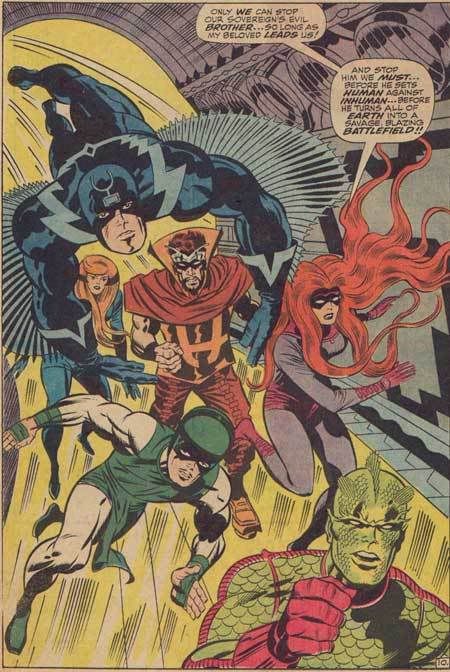
Art by Jack Kirby
Medusa is still Fire, Gorgon (yes the group includes both a Medusa and a Gorgon) is Earth (very apparently given his Bull/Goat appearance), Black Bolt is Air (the sole flier, with super ultra-sonic powers), and Triton is Water (obviously). Crystal then is the Quintessence, as she controls the four Elements. This leaves Karnak out, but we might note that Karnak has no super powers. Instead he is a master of super-esoteric arts, a monk. Karnak is the high priest of the spatial order his compatriots represent. Also great is the Inhumans "dog" Lockjaw, a living Stargate, absolutely appropriate, a great item of surrealism on Kirby's part.
Given the major level of influence that Kirby has had on popular culture in general, and to super hero media in specific, I bet we could find all sorts of interesting expressions of this symbol system. I'm interested in hearing other people's observations. To demonstrate how far-ranging the expression of the elemental qualities can be, I direct you to my article Tetramorph(eus) and the Blue Illusions for a sneaky example from "Star Wars II: Attack of the Clones". Or how about Alex Toth's late 60's Hanna-Barbara cartoon "The Herculoids"?
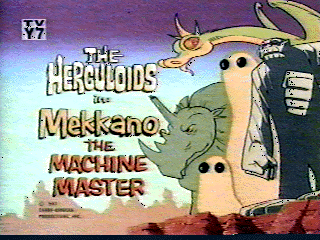
Energy-rock shooter Tundro is Fire, flying dragon Zok is Air, shape-changers Gloop and Gleep are Water and the Rock Ape Igoo is obviously Earth. Plus I think Zandor, Tarro and Dorna are something of a Royal Family. At any rate Zandor as the leader of the Herculoids occupies the Quintessential position.
Another subtle application of the elemental pattern comes from Marvel's "Power Pack", created by writer Louise Simonson and illustrator June Brigman.
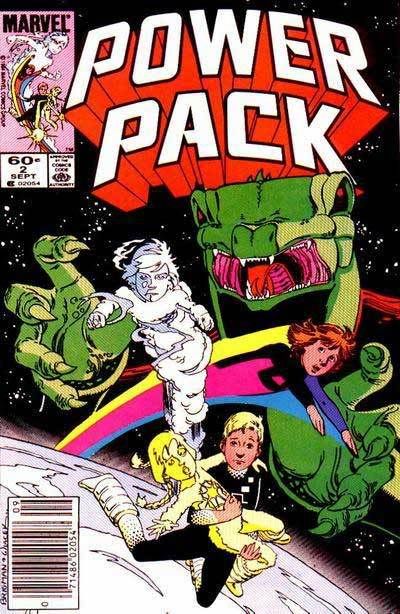
Art by June Brigman
Power Pack's powers relate to four fundamental scientific principles, gravity, light, mass and energy, but we can observe that Alex/Gee controls gravity (Earth), Julie/Lightspeed flies (Air), Jack/Mass Master becomes vaporous (Water) and Katie/Energizer disintegrates matter and emits explosions (Fire). Eventually Power Pack gained a fifth member, and we have no difficulty viewing him as the Fifth Element, because he's the aforementioned Franklin Richards.
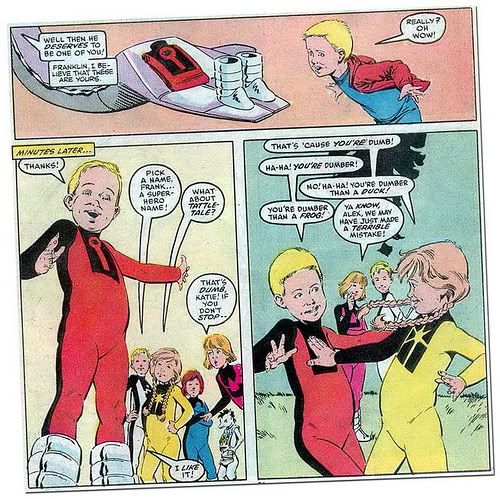
Art by June Brigman
Dig the Moon Boots. Franklin's Power Pack emblem, its worth noting, is an Eye emitting a beam of Light.
Want one more? I got a good one, with a really sneaky application of the Elemental Pattern. I'm talking about the original Doom Patrol, created by writers Bob Haney and Arnold Drake and illustrator Bruno Premiani. Through what can only be considered sheer synchronicity DC's Doom Patrol debuted in "My Greatest Adventure" in the summer of 1963, just months before Marvel's "X-Men" hit the stands. Both titles featured a team of super heroes that felt ostracized by the outer world due to their freakish natures, and both were led by a wheelchair bound scientist. While it's not possible that Kirby's X-Men was a take off of the Doom Patrol, it is apparent that the Doom Patrol was directly influenced by the Fantastic Four and the Marvel comics style in general.
Now, the characters are not elemental in nature, not really. Cliff Steel/Robotman is a human brain implanted in a super strong robot body, Rita Farr/Elasti-Girl (note this name was used in "The Incredibles") can both shrink and grow, Larry Trainor/Negative Man could project an anti-energy being from his body, and Niles Caulder/the Chief was just very, very smart. I think arguments could be made that the powers and characteristics of the Doom Patrol do relate to the four elements, but there's a clearer indication of the pattern that comes in a different manner. Here are the origins of the Doom Patrol. All art that follows is by Bruno Premiani.


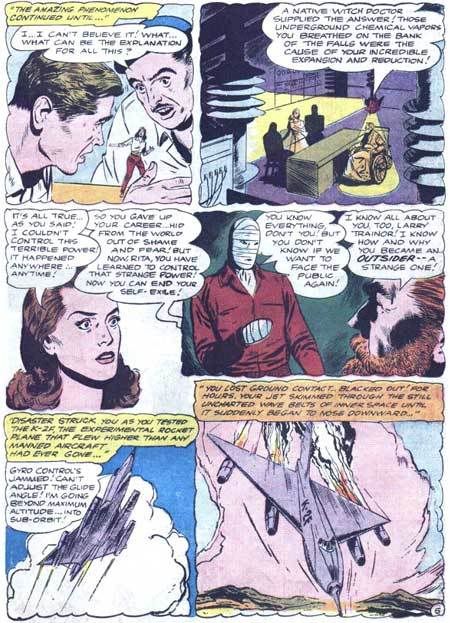

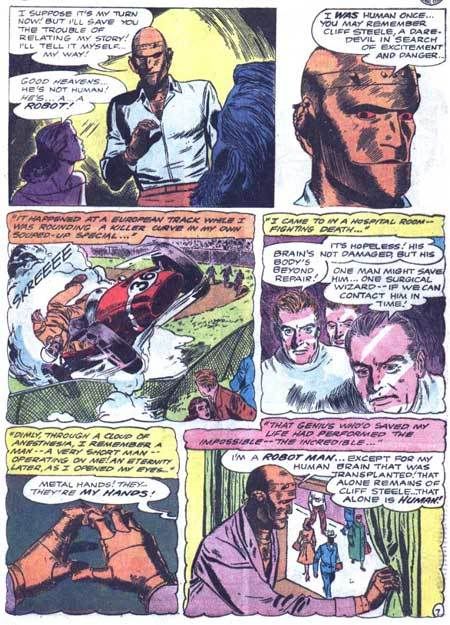
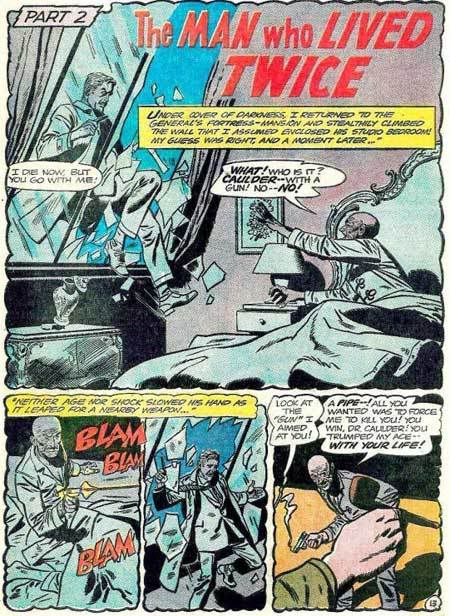
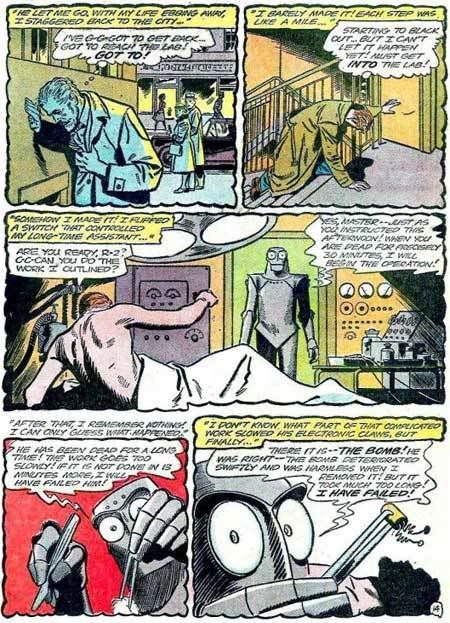

Is that great or what? The elemental indications come in the characters' origins, Rita in the Water, Larry in the Air, Cliff on the Earth, and the Chief had a bomb, Fire, implanted on his spine. Also note the use of the name R-2 for a faithful robot here in the mid-sixties (even better, he's also RA-2).
One more thing before I go. In Bat Time Bat Channel I included this work of Pop Art by Roy Lichtenstein:
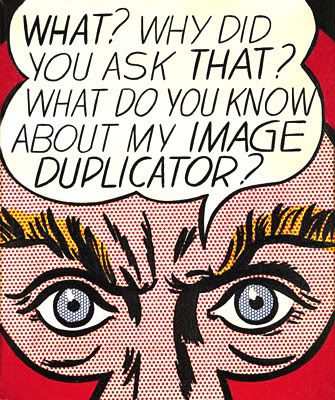
That's quite clearly the helmet of Magneto depicted in the painting. The face underneath, however, actually was traced from an image of the Chief from an episode of the Doom Patrol, drawn by Premiani:
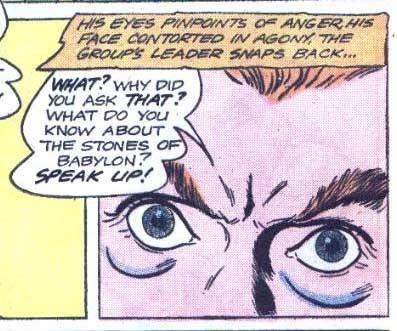
How strange. These characters are unrelated, being from different companies. The Chief pretty easily relates to Professor X, but what's really boggling is that both characters, Magneto and the Chief, had controversial reworkings by Chaos Magician comic book writer Grant Morrison. In both cases Morrison took good characters (Magneto having been reformed more or less at that time) and made them fundamentally evil, a little retrograde action. What does Grant Morrison knows about Roy Lichtenstein's Image Duplicator?
No comments:
Post a Comment